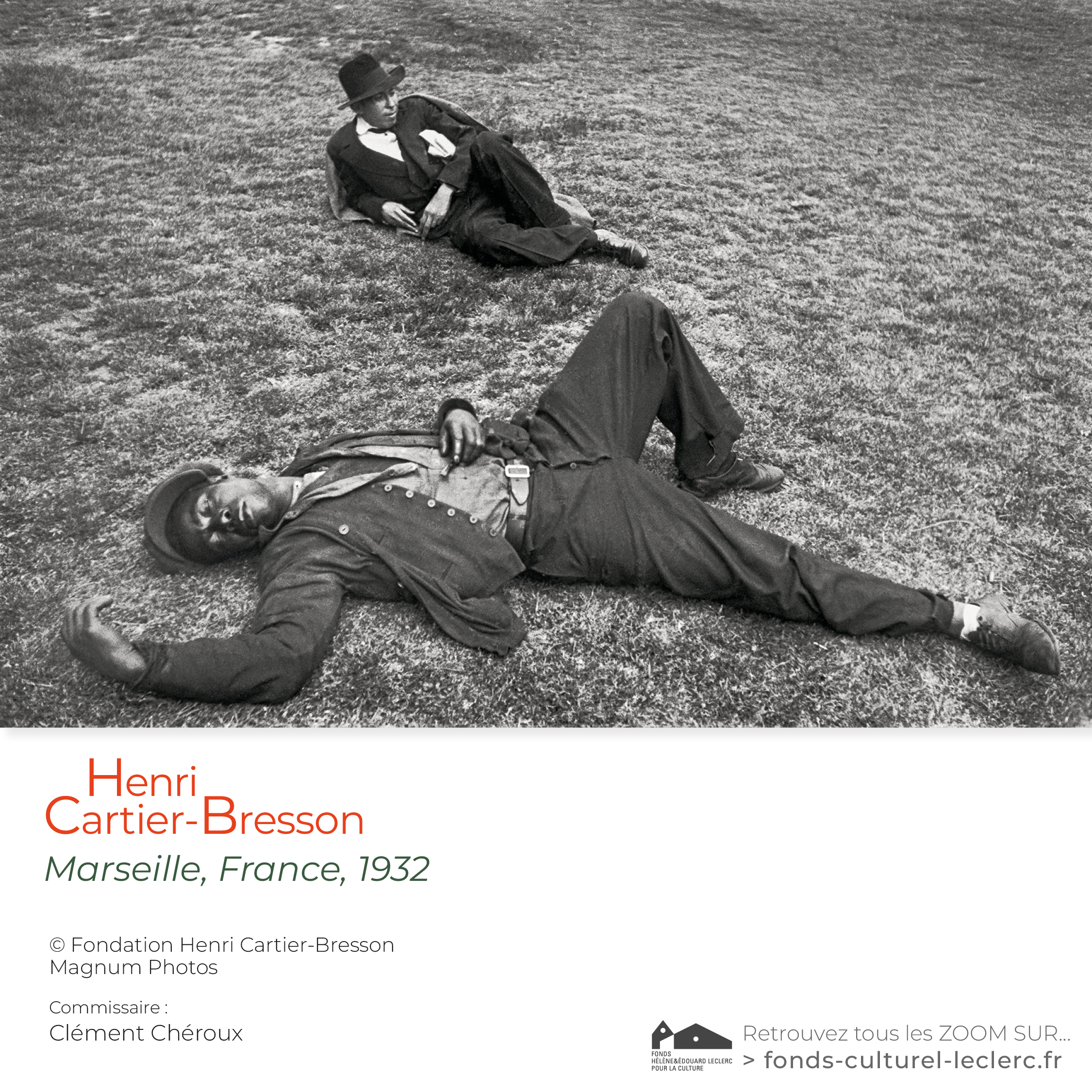- Publié le 26/07/2024
- Par Équipe Médiation
[ZOOM SUR] l'exposition « Henri Cartier-Bresson »
- Focus sur la section 2 de l'exposition « Henri Cartier-Bresson » : L'obsession géométrique
L’obsession géométrique
Avant de devenir photographe, Cartier‑Bresson voulait être peintre. Entre 1926 et 1928, il étudie dans l’atelier du peintre cubiste André Lhote, un passionné de géométrie qui place au‑dessus de tout le principe du nombre d’or. De cet enseignement, Cartier‑Bresson conservera surtout une grande habileté à composer ses images. La photographie des deux hommes prise à Marseille en 1932 en témoigne. La disposition des deux corps recompose un triangle qui part des coins inférieurs du cadre pour se terminer en un point situé au premier tiers du bord supérieur de l’image. Cette composition n’a rien de gratuit. Elle sert à mieux mettre en évidence une opposition entre deux personnes que tout semble séparer. Le corps abandonné du dormeur passablement débraillé et coiffé d’une casquette au premier plan contraste ainsi mieux avec le maintien plus strict de l’homme éveillé, en costume et chapeau, à l’arrière plan.
L’un est noir, l’autre blanc. Le premier pourrait bien être un ouvrier ou un docker, le second un bourgeois. Par cette construction pyramidale, Cartier‑Bresson propose une représentation symbolique des rapports de classe.
Obsessed with geometry
Before becoming a photographer, Cartier‑Bresson wanted to be a painter. Between 1926 and 1928, he studied in the studio of the cubist painter André Lhote, an artist with a passion for geometry which places, above all else, the principle of the golden number. From that teaching Cartier‑Bresson especially retained a great capacity for composing images. The photograph of the two men taken in Marseille in 1932 clearly shows that. The disposition of the two bodies composes a triangle that goes from the lower corners of the frame to end in a point situated at the third from
the upper edge of the image. This composition is not gratuitous. It is used to emphasise the opposition between two people that everything seems to separate. The relaxed body of the sleeper, sloppily dressed and wearing a cap in the foreground makes a strong contrast with the stricter deportment of the man awake, in suit and hat in the background.One is black, the other white. The first could well be a worker or a docker, the second a bourgeois. With that pyramidal construction, Cartier‑Bresson offers a symbolic representation of relations between classes.
Pour en savoir plus, rendez-vous dans l'exposition Henri Cartier-Bresson jusqu'au 05 janvier 2025, au Fonds Hélène & Édouard Leclerc.
Commissariat : Clément Chéroux.
- Commentaires
- Le 30/12/2024
- par Léonard Colombo
- Je veux simplement dire combien cette exposition m'a touché. J'y reviens encore plusieurs mois plus,tard pour examiner chaque photo en détail. Quelle talent, quelle maitrise. Le petit livret est merveilleux de clarté et de simplicité. Merci d'avoir proposé cette exposition.
S'ABONNER AUX NOUVELLES DU FONDS
FHEL
POUR LA CULTURE
AUX CAPUCINS
29800 LANDERNEAU (FRANCE)
02 29 62 47 78








